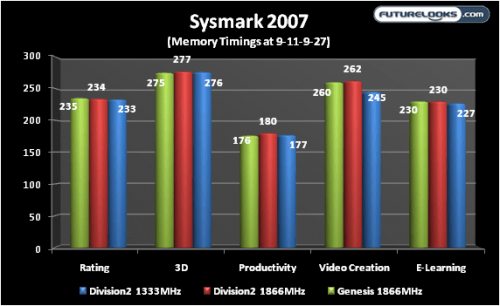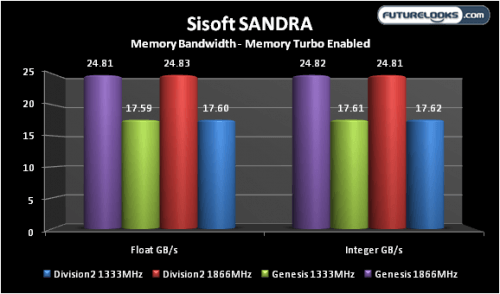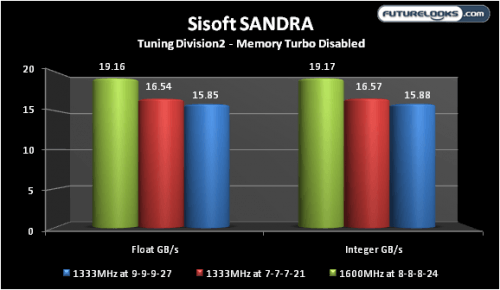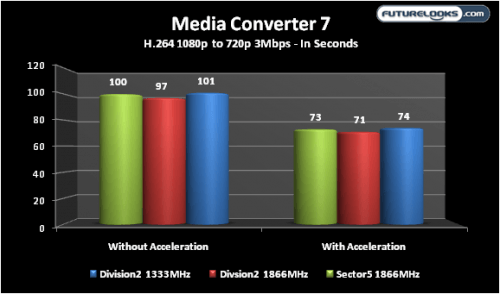Sysmark 2007

Some programs in Sysmark will never improve no matter how far you overclock the system. It will execute just as it normally would. However, the programs do load quite fast. Applications represented by 3D like Autodesk and 3DSMAX reveal the most benefit.
Sisoft SANDRA

For comparison, the Genesis memory was lowered to match the frequencies and timings of the Division 2 memory. It’s evident that there is a mountain of memory bandwidth difference between the default 1333MHz Sandy Bridge frequency and 1866MHz. Since the numbers are so close, it’s very possible that the two kits are using very similar ICs. This is pretty common when working with high end memory kits.

Remember, if your system doesn’t support high performance overclocking memory like this, it can pay off downlocking the Division 2 frequencies and lowering the value of the memory timings which essentially increases the memory bandwidth compared to higher memory timings. As you can see above, it can make a world of difference even if your system is only stable at 1600MHz with CAS8 timings.
Media Converter 7

After some chipset specific fine tuning, you’ll notice that there’s a few seconds difference between the Sector 5 and Division 2. The completion times do change slightly as the video file size increases. If you’re working with a 5GB video file, you really start to get the benefit of faster memory. Having more of it would help as well with such large file sizes.
Final Thoughts

Intel’s Sandy Bridge has changed the way we expect to overclock our system memory. It’s a very easy business overclocking these new platforms and Patriot is simply providing the modules needed to help make that happen. That’s why it’s important to choose a motherboard capable of supporting these high end modules. On the same note, these new modules are equally supported in Lynnfield or Clarksdale systems.
When it comes to high quality memory modules, the Patriot Memory Divsion 2 Viper Xtreme 4GB 1866MHz DDR3 dual channel memory will compliment Sandy Bridge perfectly. The XMP profile is extremely easy to use in the BIOS and the SPD chip is making sure that happens. It’s just an added bonus that all that technology is hiding under such sweet looking black on copper memory sinks.
Despite recent memory IC cost increases, this kit can still be found for a mere $89 to $94 USD depending on any rebates. This is definitely the good stuff!
Pros
- High quality and attractive design
- Very solid 1866MHz performance
- Easy to use and setup XMP profiles
- Also compatible with Clarkdale and Lynnfield
Cons
- Fin height might block some large heatsinks (more of a universal problem though)
Overall Rating: 9.0 / 10.0

Love This Review? Hate This Review? Leave a Comment Below!
